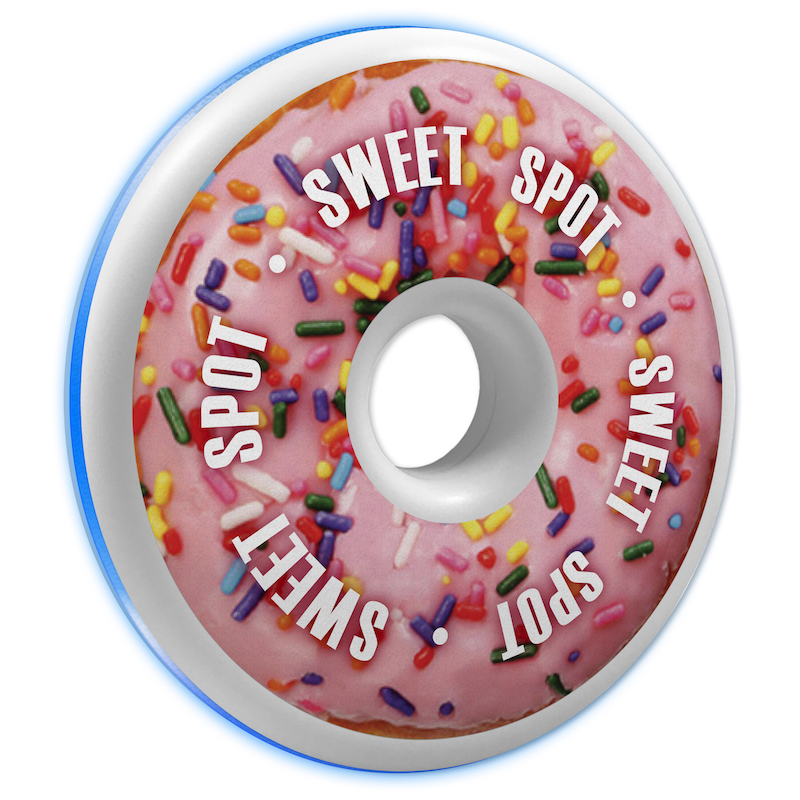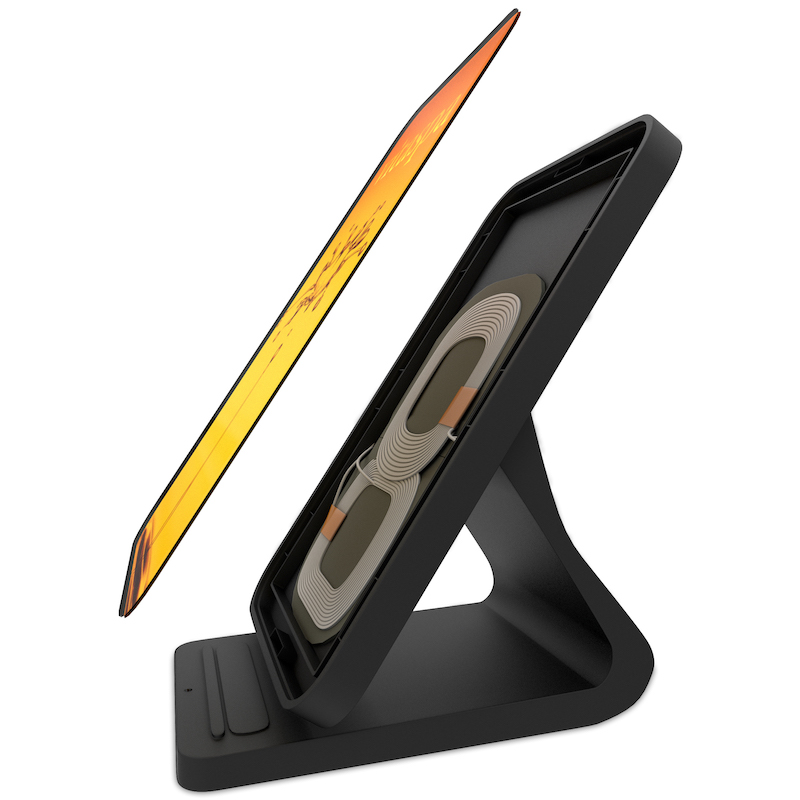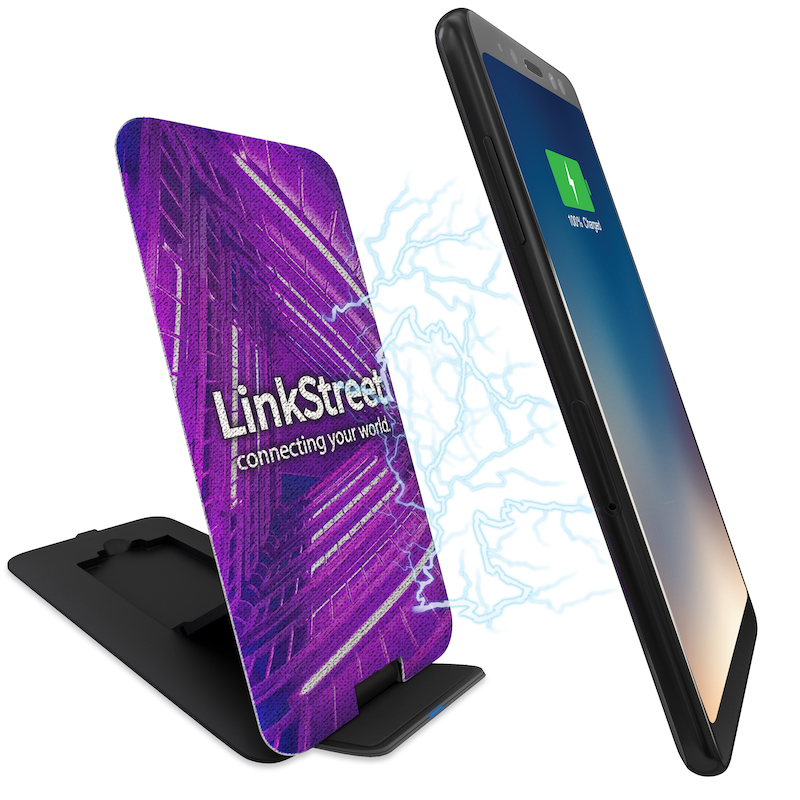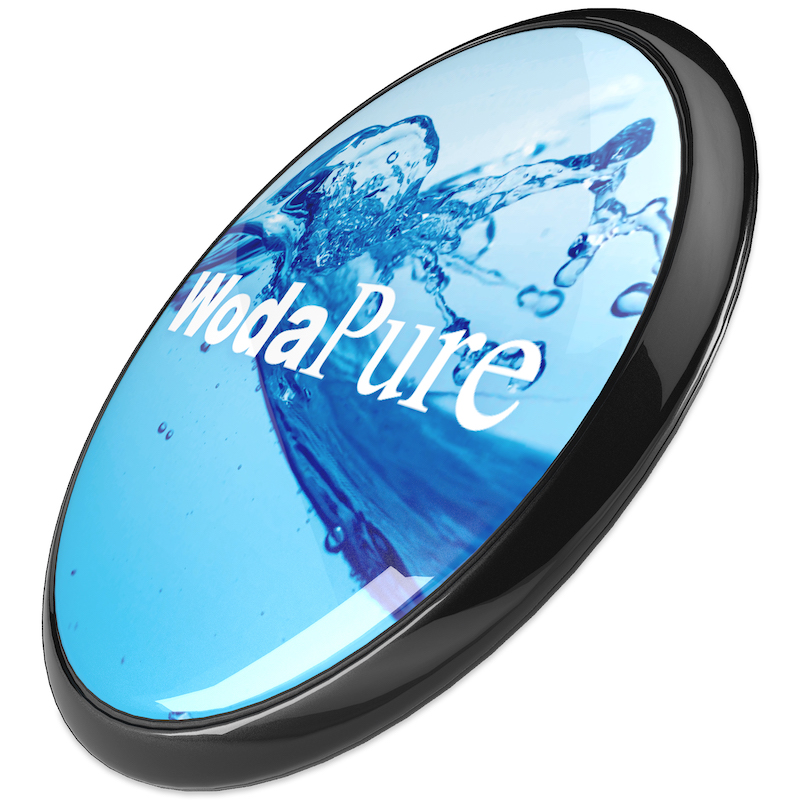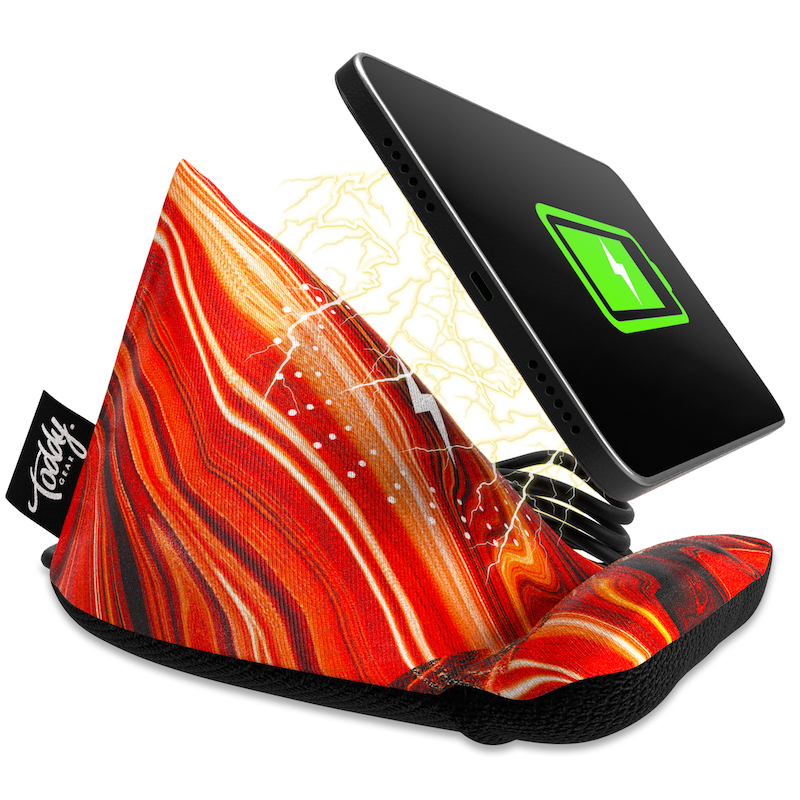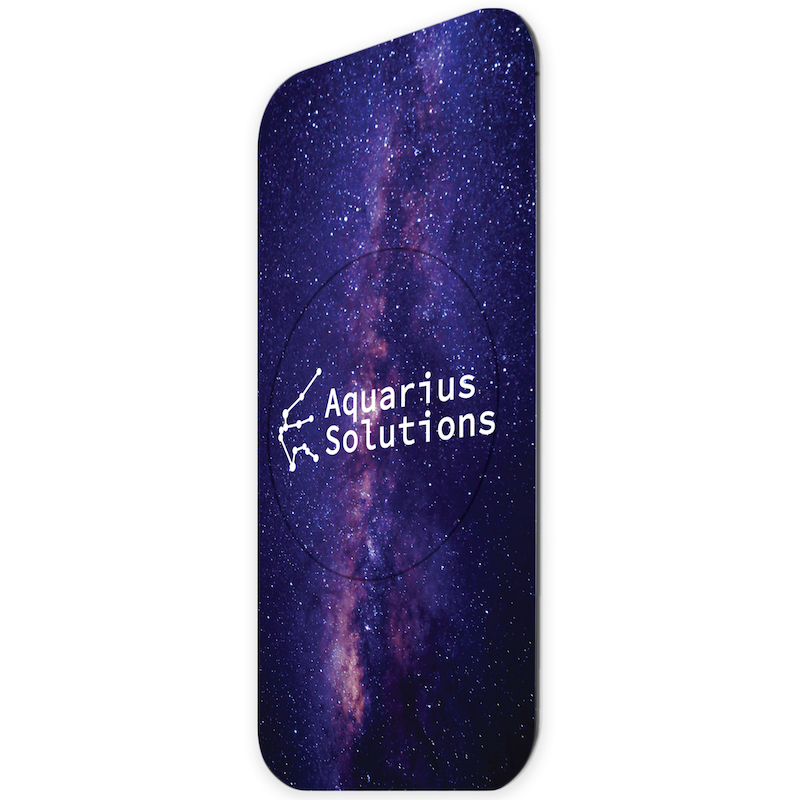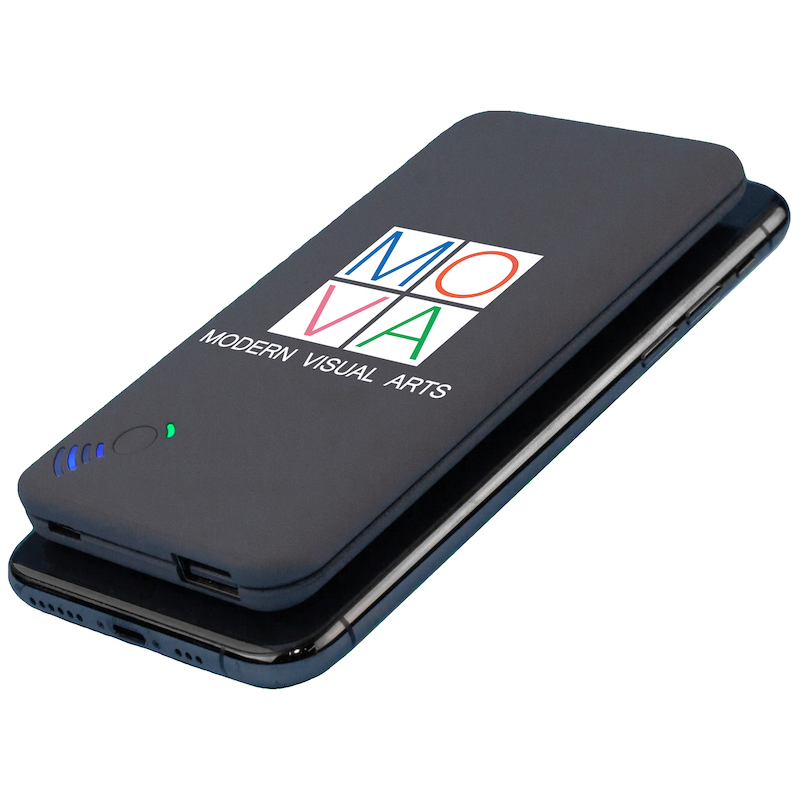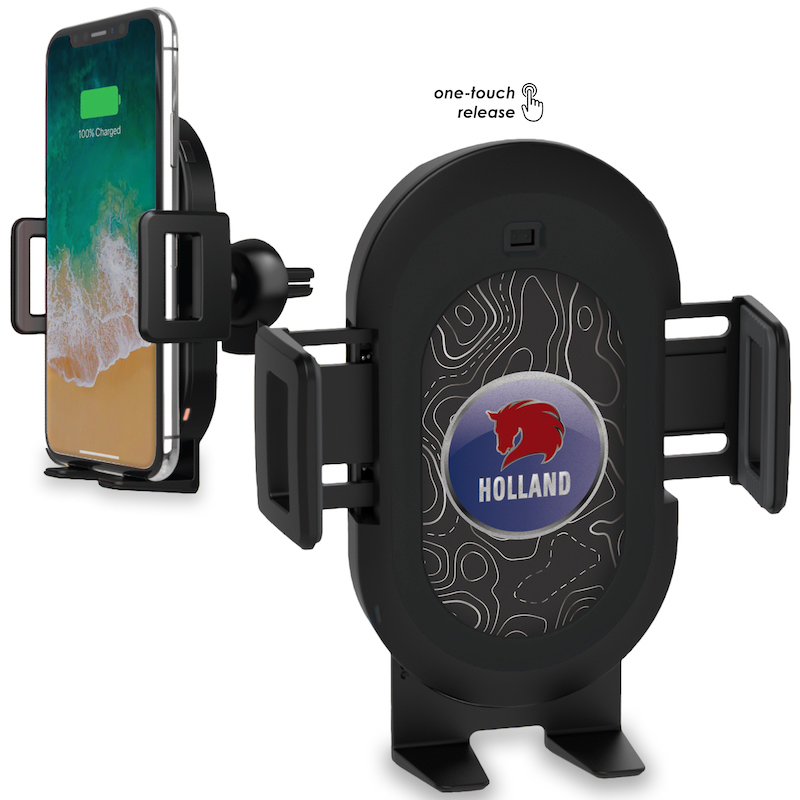Wireless charging is the latest and greatest way to charge mobile devices. It’s easy to use, fast, safe, and fiddling around with cables is not required. But what is wireless charging? How does it work? And how do you make sure you are offering your customers the best quality promotional wireless charging product? At QRG, we know a thing or two about wireless chargers, and we’re ready to guide you through the maze of wireless charging!
Wireless charging?
Wireless charging is a way of charging electronic devices without the use of a cable. In technical terms, it is called inductive charging. Place a compatible smartphone on the wireless charger, and it will start charging instantly.
There are plenty of advantages to using a wireless charger. As far as we’re concerned at QRG, it comes down to these major factors; convenience, staying charged, true universal compatibility and, of course, decoration area and branding.
Wireless chargers make charging a smartphone enabled with Qi technology a breeze. Just set the phone down on the charger, and it starts charging immediately. There’s no need to worry about a charging cable, no connector compatibility issues, just set the wireless charging enabled device down on the wireless charger and it starts charging.
In most instances, there is no need to remove the phone from its case to charge. A majority of wireless charging pads and stands will work through a phone case from 3mm up to 10mm, of course, it all depends on the specification of the wireless charger. Make sure to check the range before committing, the larger the range, the thicker the case it will work through.
Note: Be aware that cases made out metal like aluminum will cause issues with wireless charging. This is a reason why Apple dropped its aluminum shell for the solid glass back. Wireless charging cannot conduct through aluminum or any metal.
How does wireless charging work?
Wireless charging is based on inductive charging. During inductive charging, power is created by passing an electrical current between two coils. When this happens, an electromagnetic field is created.
When the receiving magnetic field on the mobile device comes into contact, or even within the range, of the wireless transmitter, the electromagnetic field generates an electrical current. That current is converted into direct current (DC). Just like with wired charging, the DC charges your device’s battery!
Single or dual-coil?
It only takes a single-coil to charge your phone, but a number of wireless chargers offer a “dual-coil” option. Why is that?
You might expect that a second coil would increase the charging speed, but actually, this isn’t the case. A dual-coil charger gives you the ability to position the phone in various orientations– landscape, portrait – and still get a charge. Having dual-coils is truly important when you are dealing with wireless charging stands. Why? Say you have a wireless charging stand and it offers portrait and landscape orientation. If it only boasts a single-coil, charging will just work in one orientation. Without the second coil, the transmitting and receiving coils for the alternate orientation will not line up, therefore they will not be in range for the transmission to happen. Dual-coil devices offer the option to charge in both landscape or portrait orientation, solving this problem.
What is Qi?
Qi (pronounced chi) is the established wireless charging standard. It’s owned by a group called The Wireless Power Consortium, and it’s backed by pretty much every major mobile device manufacturer; Apple, Google, HTC, Huawei, Sony, Nokia, Motorola and more. The Wireless Power Consortium’s aim is to deliver safe and easy-to-use wireless charging, as well as compatibility with all devices that bear the Qi logo.
Both Qi-Certified and Qi-Standard devices have been manufactured to meet or exceed Qi specifications, resulting in the highest quality product. The difference between Qi-Certified and Qi-Standard is that Qi-Certified wireless chargers have been tested by a third party, whereas Qi-Standard devices have been tested by the manufacturer.
Branding has never been this powerful!
Everyday products that make lives easier make the best promotional gifts. Wireless chargers have a massive footprint in this category.
Being able to simply set down your phone to power-up makes staying charged and connected breeze! What this also means is that wireless charger doesn’t get put in a drawer or covered by clutter. Unlike other products, the wireless charger is always out in the open, waiting to have a smartphone set on it. Thanks to this visibility, you’ve got a fantastic surface area to brand on!
Looking for a modern high-gloss look, a vintage canvas look, or a one-of-a-kind wireless charger with the highest quality dye-sublimated imprint? Explore all of your options. The more unique the promotional product is, the more memorable/successful the branding program will be.
Choosing a Supplier
Keep in mind, not all suppliers are created equal. Make sure choose a trusted supplier, one that has a great track record for customer service, on-time delivery, decoration, and product quality to ensure you are presenting a product that you will stand behind. QRG offers Qi-Certified and Qi-Standard wireless chargers.
5/7.5/10W? What does all this mean?
Wireless chargers have various power outputs, the minimum is 5W. Many wireless-enabled charging devices support 5W, 7.5W and 10W wireless charging. If a device is 7.5W/10W, it is considered fast-charging. Wireless chargers that support 7.5W/10W are preferred over the 5W chargers because they charge the device much faster.5W chargers are usually what is provided with smartphones even if they support fast-charging.
Quality wireless chargers come standard with smart chips that regulate the amount of power that is delivered to the device. For instance, if the device is 5W and the charger is rated up to 10W, the wireless charger will recognize that the device only needs 5W of power and will deliver just what is required.
Are wireless chargers safe to be around?
Yes, they are! It is safe to be in close proximity of wireless chargers and charging devices for extended periods. Chargers that are not in use emit a harmless signal that looks for a wireless charging receiver, like the one in your smartphone. The signal emitted does not extend past the maximum distance specified on the wireless charger (3mm to 10mm). Provided that the wireless charger meets safety regulations set by organizations like the FCC in the United States and CE in Europe, they will emit less radiation than a phone connected to a mobile network.
Can a wireless charger be used anywhere?
Yes, they can be used anywhere! To ensure that the wireless charger is safe to be used anywhere, including hospitals, the wireless charging frequency needs to be strictly controlled at the manufacturing and QC stages and it’s: 110-205khz. Huh? Yes, that is what we thought too, but this is very important. The 110-205khz frequency means that the wireless charges will not affect the normal operation of surrounding wireless devices.
No interference with devices such as hearing aid, pacemakers or other devices. It will also not interfere with any devices that use Infrared (IR) Technology like thermometers, pulsometers, tonometers, etc. that hospitals rely on, making them safe to use in any healthcare application.
Will the charger get hot?
All charging devices create heat as they charge. The heat that comes off the charger is a loss of energy. The most efficient chargers are the ones that go through extensive efficiency testing to minimize wasted energy through heat. The best wireless chargers have built-in safety protocols that will automatically turn off if excessive heat is detected to protect the charging device.
Can a wireless charger overcharge the device?
It is perfectly safe to leave the smartphone on the wireless charger for prolonged periods. Wireless chargers use what is known as trickle charging. Trickle charging is when the device battery gets below 100% while still on the wireless charger a small amount of current will start to trickle, ensuring that the device is kept charged at all times.
